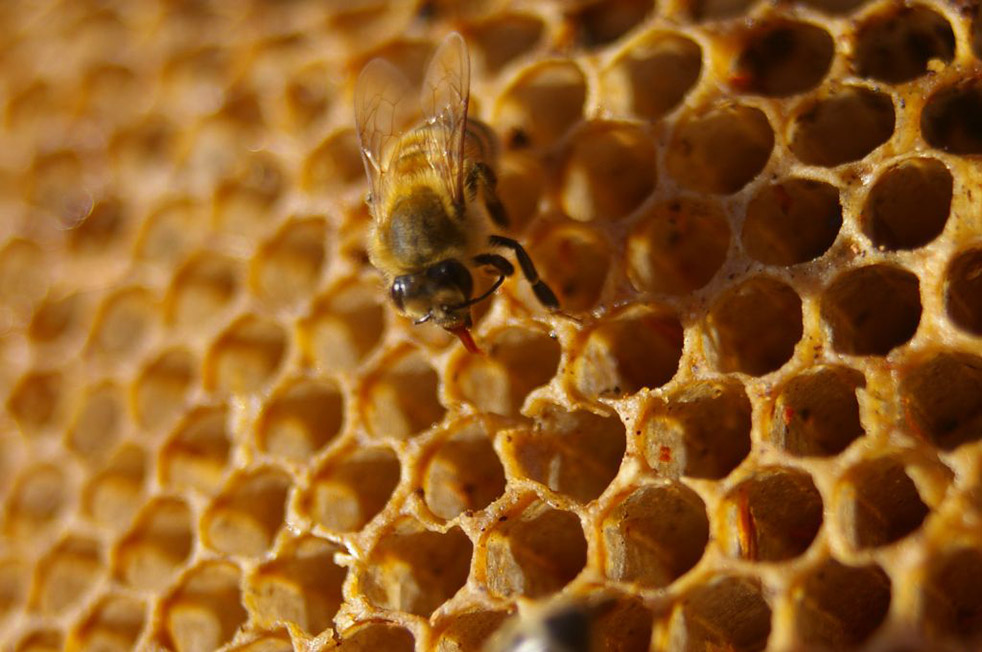Yellow jackets have not been the only creatures buzzing around the top of the Clough Commons lately – since April of 2013, a section of the space has been given over to an urban honey bee colony.
The Urban Honey Bee Project (UHBP) has been headed by Dr. Jennifer Leavey, integrated science curriculum coordinator.
“We’re working on developing interdisciplinary science experiences for undergraduates at Georgia Tech,” said Dr. Leavey. “The honey project is the first big project that has come out of our integrated science initiative.”
That goal of interdisciplinary science experiences is apparent in the variety of research inquiries, with topics including the genetic diversity of the hive, the effect of wind on entrance to and from the hive, the amount of heavy metals in the honey, and the species of flowers the bees tend to visit in urban areas.
Even whole classes have gotten involved with the hive – last year, a digital design class, ECE 2883, built a device to track bees’ moving in and out of the hive. These projects aren’t planned out in detail, but arise spontaneously with the natural influx of ideas new people bring.
As Dr. Leavey said, “one of the coolest things about this project is that it has evolved organically. As people have come in with interests, we have been able to pursue those interests.”
One of the main goals of the project has been to offer a first encounter with scientific investigation outside of the classroom for younger students.
As Dr. Leavey said, “sometimes it’s hard for students to find a lab to work in and to develop their own research projects in those labs, and we just want to provide an opportunity for freshman and sophomores to get their feet wet doing research and then move on to other research labs.”
The presence of the hive has also provided opportunities for training in the art of beekeeping. Ninety people have already been introduced to hive safety and care through courses which occur monthly when the temperature is above fifty five degrees Fahrenheit.
Interested individuals can also visit the project’s website at bees.gatech.edu to get information on involvement and sign up for the project’s mailing list.
“Any major is welcome and not just students. The faculty and staff on the campus is welcome as well,” Dr. Leavy said. “There are many people from all walks of life on campus who can contribute and be active members of the team no matter what their job is.”
The original impetus for the project came from a desire to have a highly visible display of science.
“We wanted to do something that would showcase science in the Clough building, and we talked about a lot of different ideas, including a large fish tank,” said Dr. Leavey.
After toying with the idea of an observation hive with glass walls that would allow the bee to be observed directly, the group decided after consultation with master beekeepers to establish a regular hive, which is easier to maintain.
The benefits from the project have ranged from the educational to the delicious. Honey from Georgia Tech’s bees is sold to support the project at the Farmers’ Market on Thursdays along Tech Walkway from 11 am to 2 pm.
(If you were nervous about heavy metals in urban honey, a UHBP study found that it has the same amount as rural honey.)
Dr. Leavey has hopes of expanding the project with more beehives in the future.
She said, “I do like the idea of someday being able to create some kind of array of hives around Atlanta, maybe even around the BeltLine, and using the honey from those hives as bioindicators of the environment surrounding that hive.”
